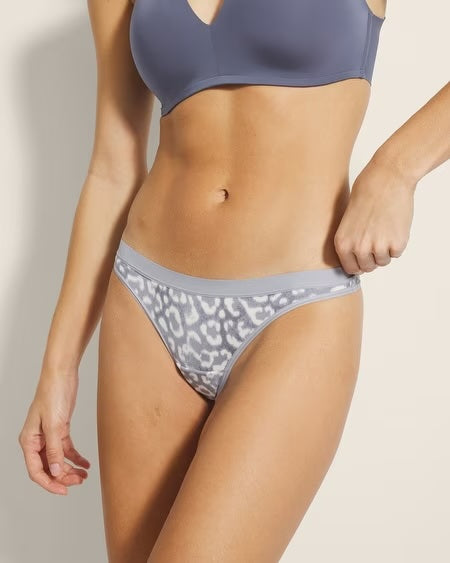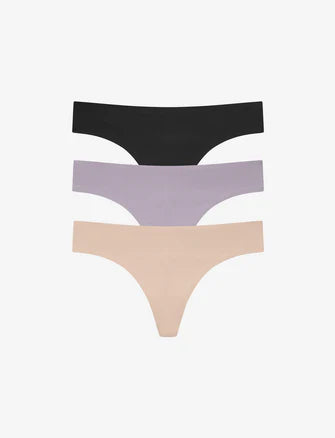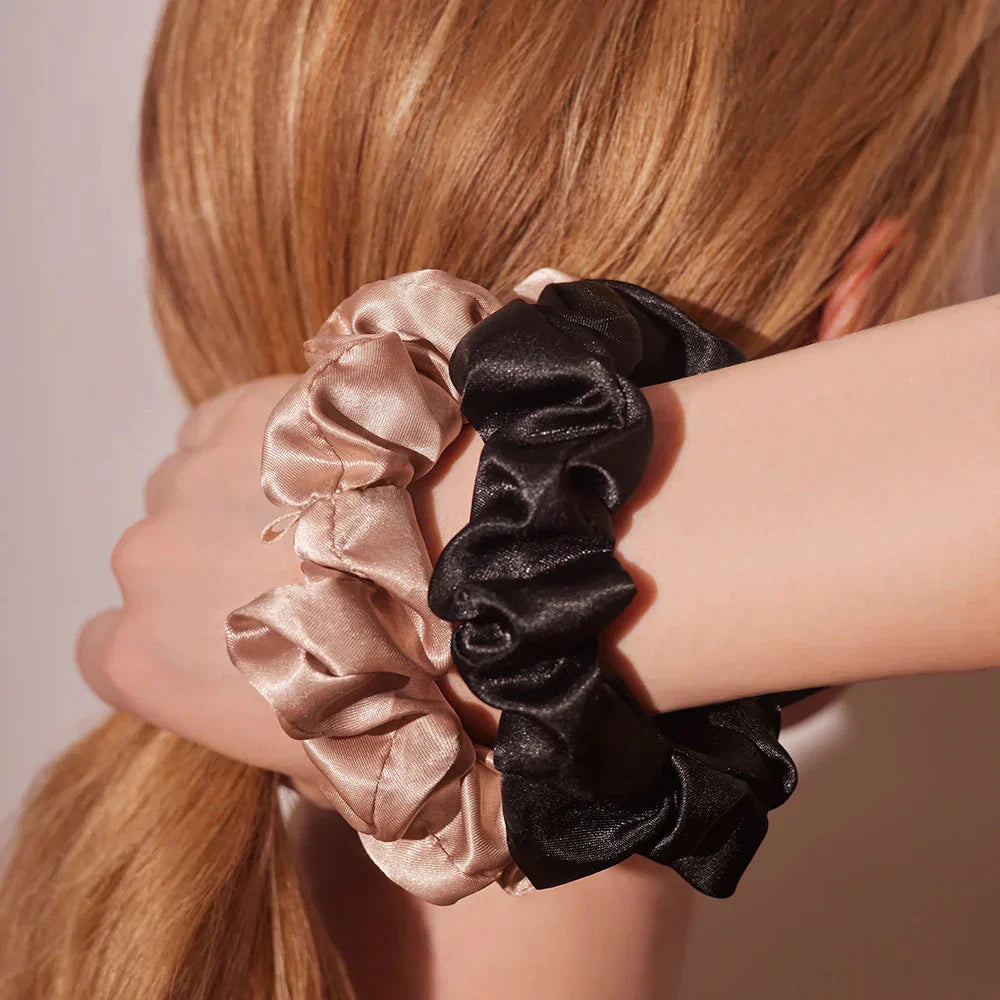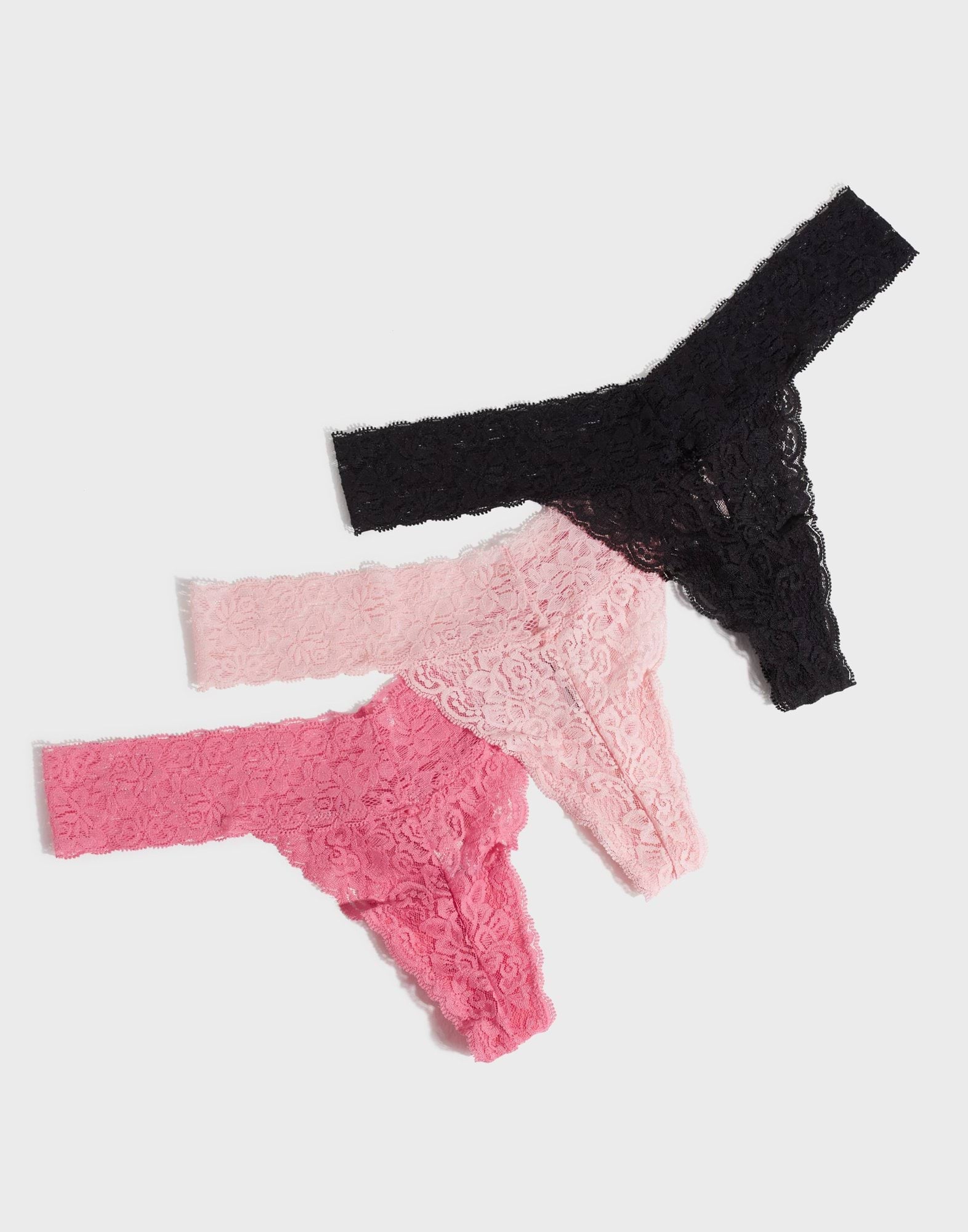Who Invented Thongs? A Deep Dive into the Origins

Who Invented Thongs? A Deep Dive into the Origins of a Controversial Classic
The thong is one of the most polarizing yet iconic undergarments in fashion history. Whether worn for its seamless aesthetic under clothing, its minimal best fabric design, or simply for style, the thong has carved out a lasting presence in lingerie and swimwear.
But who really invented the thong—and how did it evolve into the widely recognized staple it is today?
Ancient Roots: The Minimalist Undergarment Is Not New
The loincloth, for example, is one of the earliest form known garments worn by humans as the first thong bikini, essentially a piece of fabric tucked between the legs and secured around the waist. These minimal garments served the same functional purposes as today's thongs: modesty, protection, and comfort in warm climates, specifically designed to cover male genitalia.
In pre-Columbian Peru, men wore garments similar to thongs, and in traditional Japanese culture, the fundoshi served as a comparable undergarment. Sumo wrestlers in Japan have traditionally worn the fundoshi as their preferred underwear, highlighting its significance in their history and culture. While these items weren't considered lingerie, they represent the early concept of minimal coverage that defines modern thongs.
The Modern Thong: From Function to New Underwear Fashion
The modern thong, as we know it today, began to take shape in the 20th century. The pivotal moment often credited in thong history occurred in 1939, when New York City Mayor Fiorello LaGuardia ordered nude dancers at the World's Fair to wear more clothing. Designers responded with garments that required nude dancers to cover their genitals, effectively creating what we now call the thong.
But the real modern revolution came decades later. In the 1970s, Rudi Gernreich, a fashion designer known for pushing the boundaries of social norms, created the first commercially available thong swimwear in the United States. In 1974, California legislation banning nude sunbathing prompted Gernreich to design the thong swimsuit as a solution.
South America's Influence: The Brazilian Thong
While Gernreich helped introduce the thong in the U.S., it was Brazil that gave the style global appeal. In the 1980s, Brazilian beaches popularized the “tanga” and “fio dental” (literally, “dental floss”) bikinis. These ultra-minimal thong swimsuits became popular for their minimal back coverage and bold style. These swimwear styles emphasized body confidence and sensuality, inspiring designers around the world to adapt the Brazilian bikini bottoms into both swimwear and lingerie collections. This influence also inspired the trend of deliberately exposed thong waistbands on beaches and in fashion.
Victoria's Secret and the Mass Market Explosion
By the 1990s, women's underwear market brands like Victoria's Secret made thongs mainstream in the United States for domestic units sold. Victoria's Secret holds a significant place in the history of thong underwear, especially through its marketing campaigns and runway shows. Models like models Stephanie Seymour were key figures in popularizing thongs during Victoria's Secret runway shows. These weren't just utilitarian; they were glamorized, feminine, and available in countless colors and fabrics. The iconic “whale tail” moment—when thong waistbands peeked out above slim fit jeans—defined early 2000s pop culture, thanks in part to men's underwear city's nude dancers, celebrities like Britney Spears, Christina Aguilera, Paris Hilton, and songs like the thong song. This era saw a consumer thong frenzy, with a surge in popularity and marketing hype.
So, Who Really Invented Thong?
There's no single inventor of the commonly worn thong. Instead, it's a garment shaped by thousands of years of cultural evolution, reinterpreted across continents and eras, and refined by fashion designers, cultural shifts, and consumer demand. Fashion historians have traced the thong's origins through various cultural and historical milestones, noting its early appearances and significance in events like the 1939 New York World's Fair and its use as stagewear. While the Austrian-American designer Rudi Gernreich is often credited with creating the first fashion-forward thong for the Western world, the concept itself is ancient and deeply rooted in human history.
Final Thoughts: More Than a Minimalist Undergarment
Today, invented thongs come in many variations like the narrow strip, G-string, tanga, cheeky, high-waisted, elastic straps, low cut hipsters and intermediate styles like V-shaped or string thongs—offering varying degrees of coverage for every body type and preference. As a popular underwear style that has evolved over time, the thong serves as a practical undergarment, providing comfort, avoiding visible panty lines, and suiting both everyday wear and special occasions. Whether you're seeking no panty lines under a bodycon dress or embracing your curves with confidence, the thong remains a powerful symbol of both practicality and self-expression.
Who Really Invented the Thong? When it comes to undergarments, the thong has become a popular choice for many individuals. But have you ever wondered who actually invented this unique piece of clothing? Let's delve into the history of the thong and uncover its origins.
Origins of the Thong
The high rise thong, in its modern form, can be traced back to the 1930s when it was first introduced in Brazil. However, the concept of minimal coverage underwear dates back much further. In ancient times, civilizations such as the Greeks, Romans, and Egyptians all had their own versions of minimalistic undergarments that resemble the thong we know today. People wore thongs or similar garments in these historical contexts, showing that the idea of thong-style underwear has deep cultural roots.
Modern Evolution, It wasn't until the 1970s that the thong gained popularity in the Western world. Fashion designers began incorporating the thong into their lingerie collections, and it quickly became a symbol of sensuality and freedom. The invention of the thong swimsuit in 1974 was seen as a statement promoting sexual freedom and self-expression, skimpy underwear challenging social norms and nudity bans.
In 1974, Gernreich introduced the “monokini,” a topless swimsuit paired with a bottom that exposed the buttocks, which laid the foundation for the modern thong. Gernreich's innovative design aimed to provide a birthday suit feel—offering the sensation of being nude while still maintaining a level of coverage.
Popularity and Controversy, Despite its initial controversial reception, the low rise thong continued to gain popularity throughout the late 20th century and into the 21st century. A major point of cultural debate has been the thong's role as a symbol of sexual coming-of-age and its scrutiny in societal conversations about sexuality and fashion. However, around 2010, there was a major decline in thong sales as consumer preferences shifted. During this period, boy shorts emerged as the new hot commodity, with boy short styles rising in popularity as a comfortable and fashionable alternative to thongs.
Who Really Invented the Thong? An In-Depth Exploration of a Cultural and Fashion Staple
The thong swimsuit is perhaps the most controversial, yet undeniably iconic, undergarment of the modern era. From its scant coverage to its bold cultural statements, the thong bikini bridges function, fashion, and personal empowerment. Thongs have often been a hot commodity in the fashion world, with their popularity fluctuating as trends shift and resurge. Public runway shows have played a significant role in popularizing thong swimwear and underwear, bringing these styles to the forefront of mainstream fashion. We may ask, “Who truly invented the thong?”—but the reality reveals centuries of evolution, global cross-pollination, and design innovation, with fashion experts frequently citing styles and variations that have influenced the market. This expert-level deep dive examines its ancient roots, mid‑20th century transformations, mass‑market adoption, and enduring cultural significance.
1. Ancient Foundations: Loincloths, Fundoshis & Global Origins (Circa 4000 BCE – 1920s)
1.1 The Loincloth: Humanity's First Minimal Garment
The thong's minimalist design isn't new—it mirrors ancient garments like loincloths, which emerged as practical solutions in early warm‑climate civilizations. Egyptians, Mesopotamians, and Indigenous cultures throughout Africa fashioned rectangular cloths—often animal skin or woven fabric—secured at the waist and tailored between the legs. These rudimentary garments allowed freedom of movement while maintaining modesty and minimal coverage.
1.2 Pre‑Columbian and Pacific Variations
In South America, ancient Peruvian cultures, such as the Chavín (900–200 BCE), employed loincloths reminiscent in function to thongs. Meanwhile, in Polynesia and Micronesia, similar garments appear, shaped by environmental and cultural needs. These early undergarments emphasize that the concept of minimal clothing spans geography and millennia.
1.3 The Japanese Fundoshi
During Japan's Edo period (1603–1868), the fundoshi rose to prominence. This loincloth—recycled fabric often cotton—wrapped around the waist and secured via folding. Used for working, festivals, and during rituals, the fundoshi demonstrates a traditional, minimal garment deeply embedded in cultural identity and craftsmanship.
2. Between Functionality and Morality: 1930s Onward
2.1 The 1939 New York World's Fair
A pivotal moment: in 1939, Mayor Fiorello LaGuardia shocked the nation by demanding nude dancers at the New York World's Fair be covered. Designers complied by creating tiny fabric traps securing dancers' modesty—thin straps and small pouches foreshadowing the modern lower riding thong. Though primitive, this marks one of the earliest recorded instances linking the bum floss thong's minimal design to performance and social regulation.
3. Rudi Gernreich & the U.S. Thong Revolution (1960s–70s)
Meet Rudi Gernreich—Fashion Revolutionary, Vanguard designer Rudi Gernreich (1922–1985) lived at fashion's radical edge. Known for launching the monokini (the topless swimsuit) in 1964, Gernreich embraced social liberation through garments that redefined norms.
The Thong Enters Swimwear, Though Gernreich's efforts aren't widely cited as inventing the thong, he did introduce one of the earliest Western thong-style bottoms in swimwear by the late 1960s. Constructed with minimal fabrics that revived the daring aesthetic of the age, these early thongs were as sensational as they were groundbreaking.
4. Brazilian Innovation: The Fio Dental and Tanga (1980s–90s)
Birth of the Brazilian Cut, In 1984, Rio de Janeiro-born designer Newton Souza launched Agua de Coco swimwear with a radically minimal “tanga” bikini. Embracing tropical heat, sun-baking culture, and sensual expression, these designs featured string-side, minimal registers of fabric—later dubbed fio dental.
5. Victoria's Secret and the Mass Market (1990s–2000s)
The Whaletail Phenomenon, By the early 2000s, the notorious whale tail—a thong waistband peeking above low-rise jeans—became emblematic of pop‑culture rebellion. Celebrities like Britney Spears and Christina Aguilera normalized thong exposure, firmly embedding it within everyday fashion discourse.
6. Thong Styles & Evolution in the 21st Century
6.1 Rise of the G‑String
The G‑string emerged as a near-zero-coverage variant: a thin strip of fabric at the front, held by two thin strings at the back—offering nearly invisible panties ideal for seamless outlines under fitted garments.
6.2 Cheekies, Tangas & Hybrid Styles, Variations such as the cheeky, tanga, and V‑string gained popularity—merging thong minimalism with enhanced aesthetics. Wider sides or mid-rise cuts offered comfort with greater coverage, diversifying consumer choices.
7. Function, Fashion & Cultural Symbolism
Controversy and Social Commentary,Thong underwear hasn't escaped criticism—some find it inappropriate or too provocative. Conversations about public decency, workplace dress codes, and school policies reflect continued tension between conservative values and personal autonomy.
8. Who 'Really' Invented the Thong? A Complex Answer
There is no single inventor—no specific designer you can credit with inventing the garment we recognize today. The thong is a culmination: from prehistoric loincloths, the fundoshi, 1939 Fair-era dancers, Rudi Gernreich's daring designs, and Brazilian beachwear revolution, to American mass-commercialization.
9. What it Means Today: Inclusivity, Innovation & Identity
Diverse Fabrics & Technology, Today's thongs utilize seamless technology, laser-cut edges, breathable cotton-cotton blends, microfiber, moisture-wicking fabrics, and even recycled materials. Comfort and sustainability are now critical alongside fashion.
Cultural & Fashion Statements
The thong remains a symbol of confidence and choice. It evokes everything from retro glamour during a Viva Las Vegas show to a canvas for artistic expression in runway couture. Celebrity influence, especially from figures like Kim Kardashian, has played a significant role in bringing thong underwear into mainstream fashion and pop culture.
So who really invented the thong? History shows it was never one person—it emerged from global innovation, cultural reinvention, and shifting ideals of style and propriety. From loincloth to lace, the thong is the culmination of centuries of change—proof that sometimes the most minimal garment carries the greatest story.
check out our homepage Olivia Paisley


